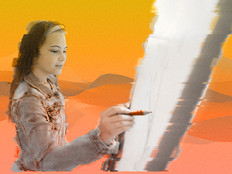Good Morning, Egypt: How to Engage Modern Students in Ancient History
Ancient world history can be difficult to make relatable to modern students. This project-based learning activity aims to bridge the gap by challenging students to produce a morning talk show–style television program, complete with segments dedicated to the news, weather, sports, politics, food, fashion, entertainment, religion and so on. The format and content should be adapted to reflect the life and times of early Egyptians and, ultimately, help students develop a better understanding of their civilization.
Begin the unit with a field trip to a local television station to give students a sense of what it takes to produce such a program. To replicate the look and feel of the period — via costumes, set decorations and other props — arrange a visit to a reuse center for donated materials that can be repurposed as such.
Next, help students immerse themselves in ancient Egyptian culture through readings and classroom discussion. This process helps assess their existing knowledge of the content. Using that information, plan relevant lessons to build and enhance their knowledge.
As new material is introduced, have students brainstorm ways to visually depict what they’ve learned. Students should work in teams to decide what and how they wish to communicate in their TV show segments.
Next, divide students into teams that will contribute in different ways to the program’s development. The production team’s role is to approve show segments and communicate the show’s vision and mission. This team then provides information about the approved segments to the director’s team, which works with the film, sound, set and wardrobe teams to create a visual interpretation of those ideas. The film, sound, set and wardrobe teams also work with the students who are designated as on-air talent to create the necessary scenes within the timeline established by the production team. The production team also storyboards the entire program to ensure that the segments flow well, and that references to other people and segments are filmed and edited accordingly.
My class, for example, once produced a weather segment “along the banks of the Nile River.” For that segment, the set team created a backdrop of a local canal and the sound team created water sound effects to lend realism to the shot. The set team also worked with the wardrobe team to create an environment that properly simulated the time and place in which the show was occurring. The film and sound team, under the director’s supervision, shot the scenes. The production team then reviewed and approved the scenes or asked for reshoots, if necessary.
Teaching Tips
- Allow students to gravitate toward their area of interest when creating visual content.
- Review all video filmed during a class period with the entire class. This will improve the quality of student contributions because they will inevitably see things that they’d like to reshoot or enhance.
- Stick to project deadlines so that students learn the importance of staying on schedule.
Once the show was edited, we screened it for students in the media center and conducted a question and answer session with the participants afterwards. We then held a “world premiere” at a community holiday festival. City organizers set up a screen and allowed us to broadcast the show to hundreds of people attending the festival.
Subject Area
This project was developed for a sixth-grade ancient civilizations class as a TV show. But the format is easily transferable across multiple subject areas and grade levels, and could be adapted as a music video or public service announcement.
Grading Rubric
Students should be evaluated on their collaboration, knowledge building and critical thinking skills, as well as the quality and accuracy of the video content they produce.
Collaboration is measured by the quality of students’ contributions to their teams. To earn the highest marks in collaboration, a student must contribute daily in a manner that leads to the successful completion of his or her assigned responsibility.
The knowledge-building component requires students to incorporate all material covered in the unit in their work for the show. The object, after all, is for viewers of the produced show to learn about ancient Egypt in the process. By creating a TV show about the content, students demonstrate a deeper mastery of the subject matter.
Creating content-related TV shows, music videos, movies and public service announcements also requires considerable problem-solving skills, as delays and complications are bound to arise. At any time, students may ask for assistance from their peers or the teacher.
The technology-related component of the grading rubric addresses the quality and accuracy of the content filmed. Students’ ability to convey learning benchmarks visually in the completion of their particular responsibilities is measured here.






